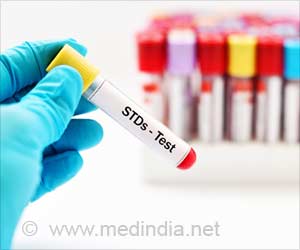Getting at the molecular components of the fertilization can be applied to block the protein’s interactions and prevent pregnancy.

When the sperm first arrives at the egg, the sperm contains enzymes to help it penetrate the egg and fuse with its target. The release of these enzymes is known as the acrosomal reaction. The head of the sperm is completely transformed by this reaction, and tremendous changes begin to take place.
A particular protein ESP1, from within the sperm stays intact at the site of fusion and remains in place, although many other proteins are lost.
ESP1 is conserved in the region of the sperm head that is thought to initiate fusion with the egg during this transformative time after the acrosome reaction.
“We suspect ESP1 is one of the key molecules that helps to stabilize the equatorial segment region of the sperm head. Getting at the molecular components of the fertilization event has a lot of practical applications,” said Herr.
“The fundamental questions are, why does the equatorial segment stay intact after the acrosomal reaction? What molecular interactions contribute to its stability?” Researchers could one day find a way to block the protein’s interactions and – possibly – prevent pregnancy by answering those questions.
Source-Medindia











